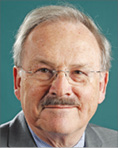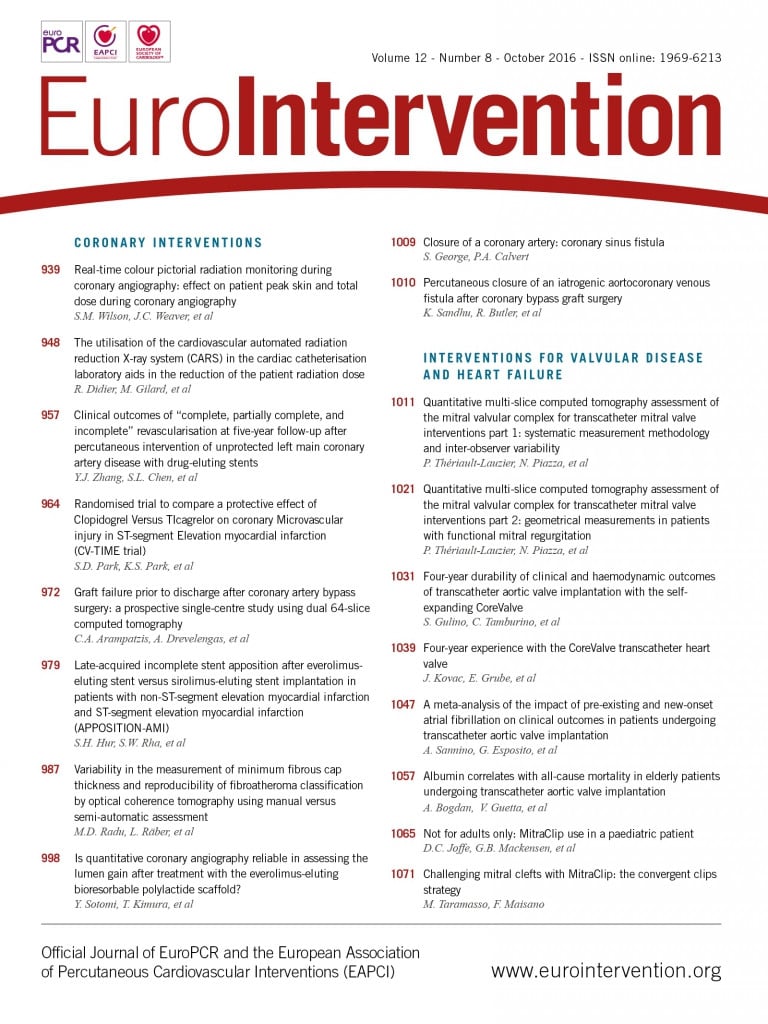
Many years ago in 2004, in the Salon Jean-Jacques Rousseau of Le Méridien Hotel in Paris, the Board of EuroPCR had a decisive meeting during which it was decided to create an association for percutaneous coronary interventions. The charter of the European Society of Cardiology specified that, for an association to exist, it had to have a scientific congress, a professional membership…and a journal.
As I look back, it was naïve of me, but without first evaluating the complexity and challenge of this type of assignment I quickly volunteered to become the journal’s first Editor-in-Chief. It was only as I returned to Rotterdam that I began thinking about what the actual requirements of such a position demanded. It quickly became clear to me that I would need a unique type of individual to collaborate with me. For an assistant in creating this journal I realised I would need someone very sociable and hardworking and, of course, an English speaker. At first, I thought about one of my co-workers, the eminent and remarkable Irish interventional cardiologist Eugene McFadden, but he was returning to Ireland at the time and so was not available.
That left me desperately searching for the optimal candidate in or near Rotterdam.
Working with me at the time was a superb study co-ordinator named Paul Cummins. Paul was in charge of the trial office at the Thoraxcenter, and it was he who was largely responsible for the success of the clinical research centre. Recently, he reminded me that I had to ask him three times before he finally agreed to take on the immense challenge of starting a scientific, interventional cardiology journal from absolutely nothing.
We found an office, and indeed we truly began from scratch to create our new journal.
I had some personal experience, having been Associate Editor of Circulation with James Willerson and also the Deputy Editor of the European Heart Journal, but those positions did not offer me the slightest idea of what was involved in the day-to-day logistics of editing a journal. Happily, from day one, Paul Cummins demonstrated his innate capability as a managing editor – a skill which is so broad, deep and overpowering that it cannot be described in this editorial. We began with four issues a year, quickly growing to six, then eight and finally 12. We applied for PubMed accreditation for referencing, and then carefully waited two years to be sure that the initial impact factor we would receive would not collapse the year after we received it … a fate that had happened to so many new and highly specialised publications.
Paul built up the management team, liaising on a daily basis with our publisher, Europa Editions in Toulouse, France. With great care, Paul worked methodically in a step-by-step fashion to make the journal the respected, influential and popular publication it is today.
I knew from our previous experience working together that he was extremely sociable, intellectually brilliant, and hard-working as only an Irishman can be. His sense of humour – that very Irish humour of his – was infectious, and he was soon the master of our office, and at the top of a network connecting interventional cardiologists from all five continents, with special attention to the Far East.
One of the most exciting times during all these years of working on the journal was when we prepared an editorial together. He would connect his computer, his earphones in place while typing away at the same time. Then, when a subject for the editorial was chosen, we would have these amazing dialogues – questions and answers that truly elucidated the key points, allowing the editorial to be quickly elaborated. Sometimes he was very respectful of one of my long tirades, and at other times he was there to help fill in the gaps – while editing the words of his Editor-in-Chief. These were special moments that will remain a permanent souvenir in my already long career.
Paul had a very special, global and synthesised vision of the entire international field of cardiology, quickly pinpointing the rising young talents to animate our editorial board. At any time I would pop into his office to propose, suggest – and sometimes require – that we try a novel idea for the journal. Some of our ideas, innovative projects and intentions were far-fetched and in those instances he was my – and the journal’s – safeguard when they became really too far-fetched. It was at these times that his Irish humour linked with the wisdom of a great manager defined the line we could not and should not cross, thus guaranteeing the continuing healthy status of our publication.
For 11 years Paul Cummins made the deadline for each issue of the journal with the extraordinary complicity of our Rotterdam staff led by Sylvie Lhoste. Eleven years must certainly be a record for any managing editor today; few would have been able to face the demands this position requires.
Today, Paul Cummins has already lived two professional lives: the first, as we mentioned earlier, was as the chief co-ordinator of clinical research at the Thoraxcenter; the second was as Managing Editor of EuroIntervention. He is now ready for another challenge, ready to go back to the purely academic milieu of the Erasmus University, where this time he will manage the day-to-day workings of the cardiovascular department and teach the students there how to write scientific and research manuscripts. His very real talents as a teacher have not, and perhaps could not have been fully appreciated by us in his current role as managing editor. However, in this new position he will be able to explore these talents to their maximum. He recently confided in me that he “aspires to a peace of mind” after all these tumultuous and stressful years, something he will surely find in his new role offering counsel and advice to students.
I believe that the interventional community – our readership, the authors of every paper published in EuroIntervention as well as the editors and associate editors of our journal – are immensely grateful for what Paul Cummins has accomplished here. I am sure that his third professional life will be as successful as his earlier ones.
Once again we thank him and wish him great success.

